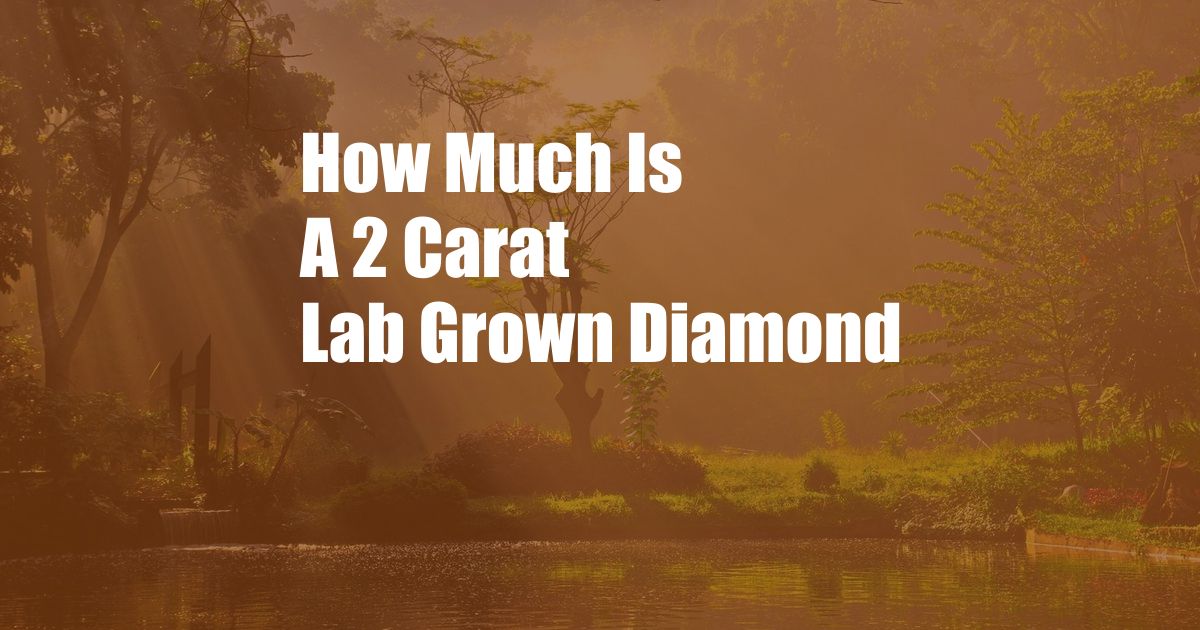
How Much is a 2 Carat Lab Grown Diamond?
Diamonds, nature’s timeless treasures, have long captivated hearts and symbolized enduring love. With advancements in technology, lab-grown diamonds have emerged as an ethical and sustainable alternative to their mined counterparts, offering exceptional brilliance and value. In this comprehensive guide, we delve into the intricacies of lab-grown diamonds, unveil their cost, and explore the factors that influence their pricing.
Lab Grown Diamonds: A Gem of Innovation
Lab-grown diamonds, also known as synthetic diamonds, are meticulously crafted in controlled laboratory environments. These marvels of science possess the same chemical composition, crystal structure, and optical properties as mined diamonds, making them virtually indistinguishable to the naked eye. Their creation process mimics the natural geological conditions in which diamonds form beneath the Earth’s surface, resulting in diamonds that rival the beauty and durability of their mined counterparts.
Value and Cost Considerations
Lab-grown diamonds, while meticulously manufactured, often come with a more accessible price tag compared to mined diamonds. The absence of extensive mining operations, coupled with advancements in production techniques, translates into significant cost savings for these ethically sourced gems. On average, a 2-carat lab-grown diamond can cost anywhere between $2,000 to $10,000, depending on various factors that influence its value.
Factors Impacting Cost
Numerous aspects play a crucial role in determining the price of a lab-grown diamond, including:
-
Carat weight: The weight of a diamond, measured in carats, is a primary determinant of its value. A 2-carat diamond is twice as heavy as a 1-carat diamond and typically commands a higher price.
-
Cut: The cut refers to the proportions and angles of a diamond. A well-cut diamond will maximize brilliance and fire, enhancing its overall beauty. The cut significantly influences the price, with premium cuts fetching a higher price.
-
Color: Lab-grown diamonds are typically graded on a color scale ranging from colorless (D) to near-colorless (J). The closer a diamond is to colorless, the more valuable it becomes.
-
Clarity: Clarity measures the presence of inclusions and blemishes within a diamond. The fewer imperfections, the higher the clarity grade and the higher the price.
-
Fluorescence: Fluorescence refers to a diamond’s reaction to ultraviolet light. While some fluorescence can enhance a diamond’s brilliance, excessive fluorescence can appear milky and devalue it.
Tips for Savvy Buyers
Navigating the world of lab-grown diamonds can be daunting, but with these expert tips, you can make an informed decision:
-
Compare prices: Research the prices of different diamonds from reputable vendors to ensure you’re getting a fair deal.
-
Consider your budget: Lab-grown diamonds offer a range of prices, so set a budget before you start shopping.
-
Seek certification: Look for diamonds that come with a certificate from a reputable gemological laboratory, such as the Gemological Institute of America (GIA) or the International Gemological Institute (IGI).
Frequently Asked Questions
Q: Are lab-grown diamonds as valuable as mined diamonds?
A: Lab-grown diamonds are just as valuable as mined diamonds, offering the same brilliance, durability, and emotional significance.
Q: Can I tell the difference between a lab-grown and mined diamond?
A: It is virtually impossible to distinguish between a lab-grown and a mined diamond without specialized equipment.
Q: Are lab-grown diamonds conflict-free?
A: Yes, lab-grown diamonds are conflict-free, as they are not mined from areas of conflict or human rights violations.
Conclusion
Lab-grown diamonds, with their exceptional beauty, ethical sourcing, and accessible price range, are an alluring option for discerning diamond enthusiasts. By understanding the factors that influence their cost and adhering to expert advice, you can make an informed decision and add a touch of brilliance to your life.
Are you interested in knowing more about lab-grown diamonds?